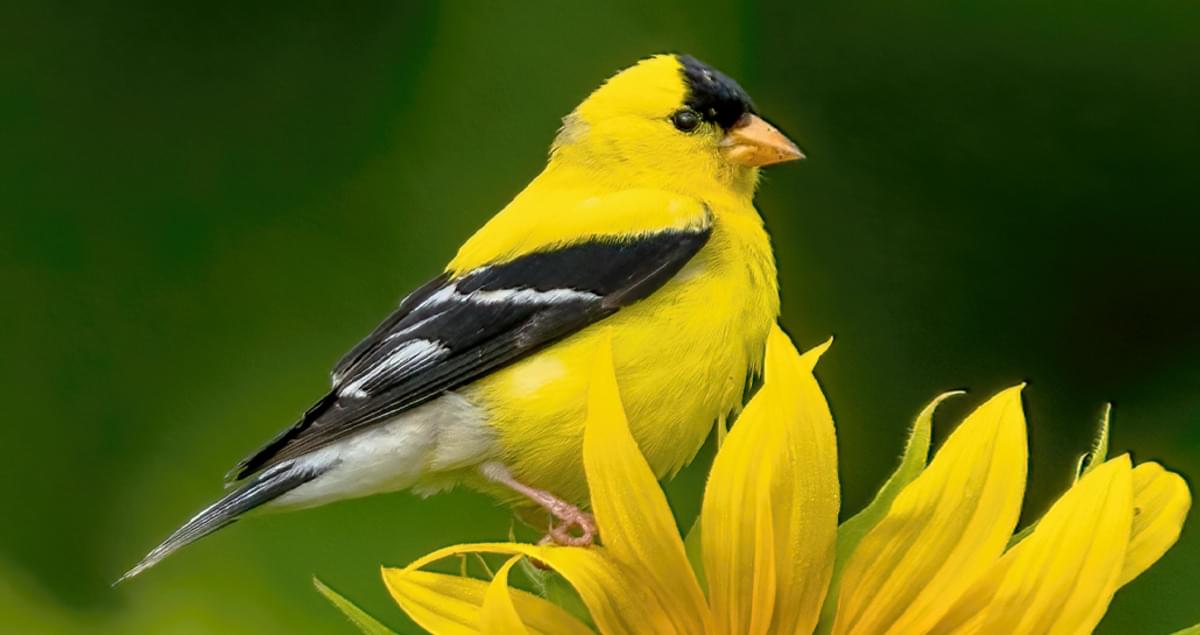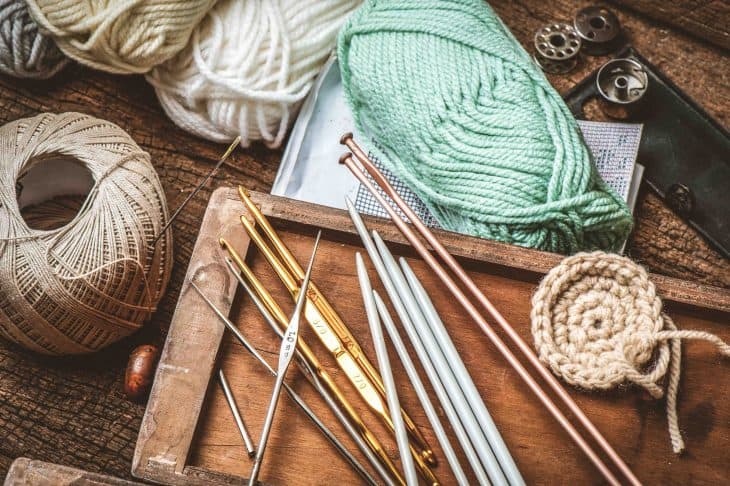
Knitting vs. Crochet, is there a difference? The answer isn’t always easy to give. At first glance, the two of them seem really similar. They are, in many ways, but they aren’t one and the same. They are two different crafts. It might be difficult to distinguish between the two of them, but it isn’t impossible. In fact, once you look closer, you’ll realize that knitting and crocheting are very distinct.
If you want to learn more about the similarities and differences between knitting and crocheting, then read on! This Knitting vs. Crochet list will explain everything from the tools to the techniques!
Knitting vs. Crochet: What are the similarities?
Before differentiating knitting vs. crochet, it’s important to understand why we keep confusing the two of them in the first place.
Knitting and crochet are both methods of stitching.
Down to their basic definitions, knitting and crocheting are similar. Like sewing, they are both types of stitching. However, instead of thread, they use yarn. Whether it’s from knitting or crocheting, a cute scarf or DIY sweater results from repeated stitches.
Knitting and crochet are both cheap hobbies.
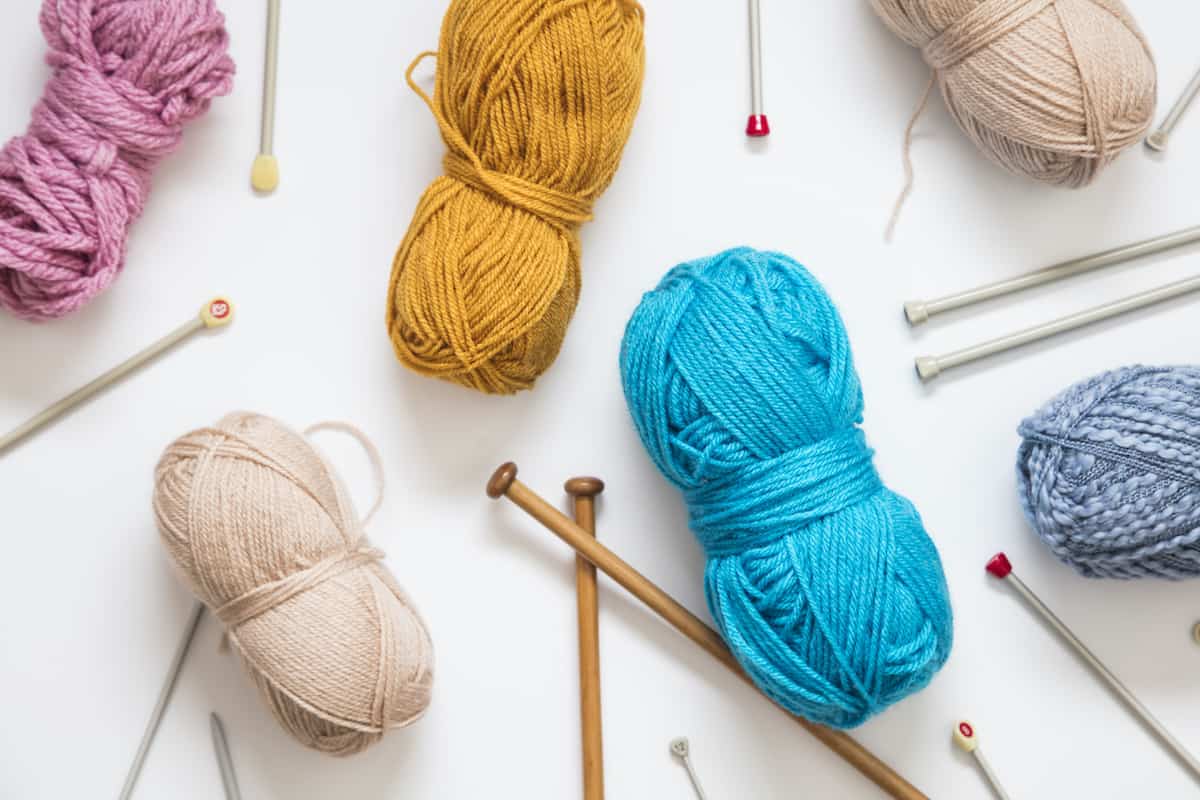
They won’t burn a hole in your pocket. Because of this, so many people recommend knitting and crocheting! You can buy different needles and yarn at cheap prices. Since you can reuse your tools, you only need a steady budget for yarn. Plus, they are also accessible. Most craft stores sell these materials.
Knitting and crochet produce similar products.
If you’re a fan of DIY projects, then knitting or crocheting might be your thing. Both crafts are great for making cute clothes and even home decor! With your needles and yarn, you can make almost anything.
Pillowcases, blankets, and socks are just some of the popular choices. The best part about these projects is that they are almost always useful. They are also great gift options for your loved ones!
Knitting and crochet have similar benefits.

You don’t just get a blanket or shawl at the end. You get a lot of other benefits as well.
Both knitting and crocheting have therapeutic effects. Of course, it can get a bit frustrating at first. However, as soon as you get the hang of things, you’ll make fewer mistakes. Muscle memory will soon take over. Then, the repetitive movements will place you in a trance-like state. This can help calm them down. Because of this, both crafts are great stress-relievers!
Aside from relieving your stress, knitting and crocheting are great creative outlets. Whether it’s crochet or knitting, there are different colors of yarn that you can use. Plus, there are unique patterns at your disposal as well. You can express yourself in so many ways with knitting and crocheting.
Knitting and crocheting stimulate your brain. They might look simple, but they require a lot of patience and discipline. They also improve your hand-eye coordination. Because of these, they keep your mind active.
Furthermore, these crafts open doors for more friendships. There are a lot of clubs that focus on these crafts. You can join one and meet new people that way. There, you can also exchange tips and even gift each other with your finished projects.
With the similarities out of the way, it’s time to learn about the differences!
Knitting vs. Crochet: Tools
If you chance upon a person making a sweater in your favorite cafe or at the park, you might wonder if they are knitting or crocheting. There are easy ways to get your answer. One of the biggest hints is to observe the tools that person is using.
In knitting, they use two knitting needles.
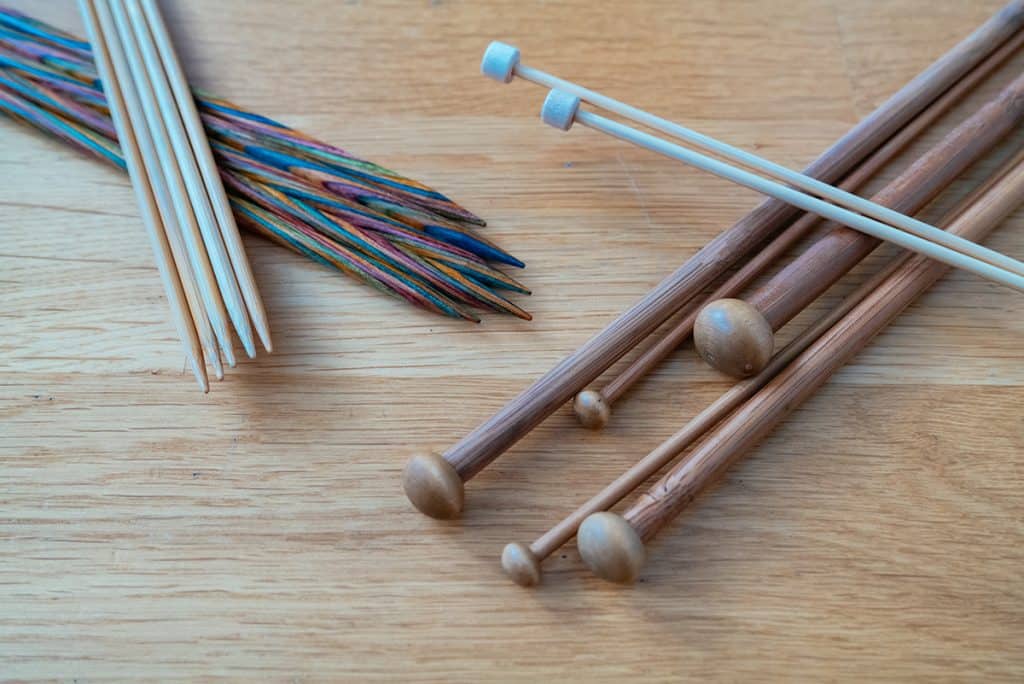
If this person is holding a needle in each hand, then they are knitting. The knitting needle, or “knitting pin,” is long and tapers into at least one pointed end. Most needles are of wooden or metal material. However, some also use bamboo, plastic, and carbon fiber knitting needles. They also come in various sizes, depending on the type of stitch you need to do.
There are different types of knitting needles: single-pointed needles, double-pointed needles, and circular needles.
Single-pointed needles are the most common type of knitting needles. It has one pointed end with a knob on the other end to secure the stitches. To knit, you use the pointed ends to make stitches. These needles are around 10 – 16 in. long.
Double-pointed needles taper at both ends. When using them, you can make stitches from either end. Usually, you’ll find double-pointed needles sold in sets of four and five. It might be confusing for some beginners, but a lot of people like to practice with these too. Like single-pointed needles, you use two of them to stitch. The remaining two or three from the set hold your stitches together.
Originally, double-pointed needles were for circular knitting, or continuously knitting until both ends of your row form a circle together. Nowadays, people prefer to use circular needles for that.
Circular needles are a special type of knitting needle. Basically, a nylon wire connects two pointed needles. The wire is flexible, which makes it versatile. You can use this for both knitting flat or circular knitting. Using circular needles is much like using double-pointed needles, but with added benefits. For one, the weight of your stitched yarn is evenly distributed. Plus, the stitches can’t slip off the needles.
Another tool for knitting is the knitting ruler. A knitting ruler, or “knitting gauge ruler,” isn’t always necessary. However, if you find it hard to memorize the size of your knitting needles, then this is your best friend. Knitting rulers measure the size of your knitting needles. This includes the length and diameter.
Did you know the world’s Largest Knitting Needles measure 14 ft. and 6.33 in. long? A college art student holds the Guinness World Record for it. She could even stitch rows of yarn with them!
In crocheting, they use crochet hooks.
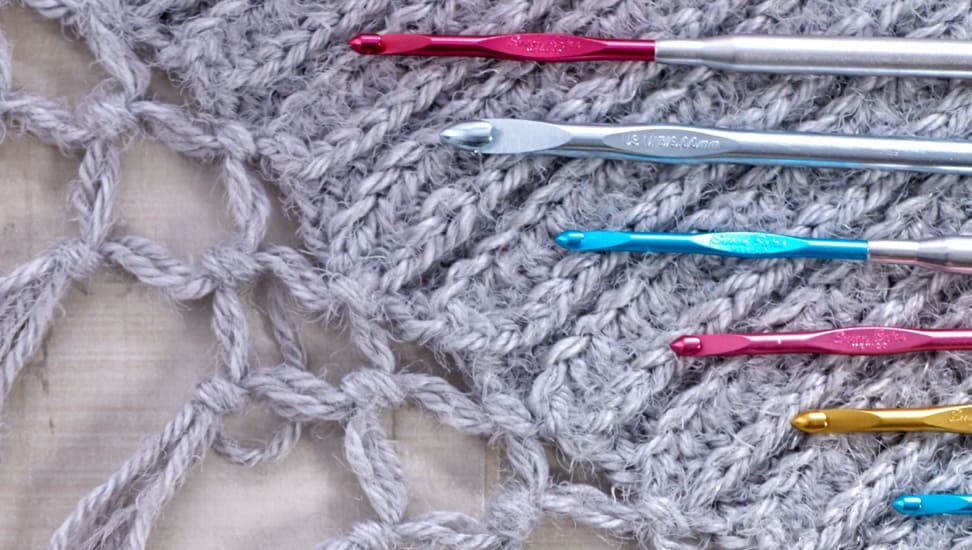
Unlike knitting, you only need one crochet hook to make stitches. A crochet hook, or “crochet needle,” is a long shaft with one end that tapers into a hook. The hook helps you loop and stitch the yarn for crocheting. Double-ended hooks are also available. Crochet hooks vary in material. However, most are usually wooden or steel hooks.
They also vary in size, with diameters ranging between 0.35 mm to 25 mm. A letter corresponds to each hook’s size. For example, a 4 mm crochet hook is called G-6. The most common is the H-8, which is a crochet hook with a diameter of 5 mm.
To use crochet hooks, you can either hold them in a pencil grip or knife grip. The name of each grip is self-explanatory. To use a pencil grip, hold the hook as you would hold a pencil. The same goes for a knife grip. This is entirely up to preference, as both are correct.
Knitting vs. Crochet: Technique
Another way to tell the difference between knit vs. crochet is the technique. This will require a closer eye. However, once you see the signs, it’ll be easy to tell which is which.
In knitting, there are two basic methods: English knitting and Continental knitting.
English knitting is a Western-style of knitting. For this method, you hold the yarn in your right hand and throw it over the needle. Repeating this is how you make stitches. Thus, other names for English knitting include “right-hand knitting” or “throwing.”
On the other hand, Continental knitting is popular in European countries. For this method, you hold the yarn in your left hand. Then, you use your right hand to hook the yarn onto the needle. This method is actually similar to crocheting. Thus, people who used to crochet often learned Continental knitting first because of ease. People also believe it is more efficient than English knitting since it requires fewer hand-motions per stitch.
Other names for Continental knitting include “German knitting,” “European knitting,” and “left-hand knitting.”
A combination of the two also exists. This is called combined knitting. This puts a spin on Continental knitting by incorporating techniques from English knitting. However, this method might be difficult for beginners as it requires mastery of both methods of knitting.
Crocheting also has many techniques.
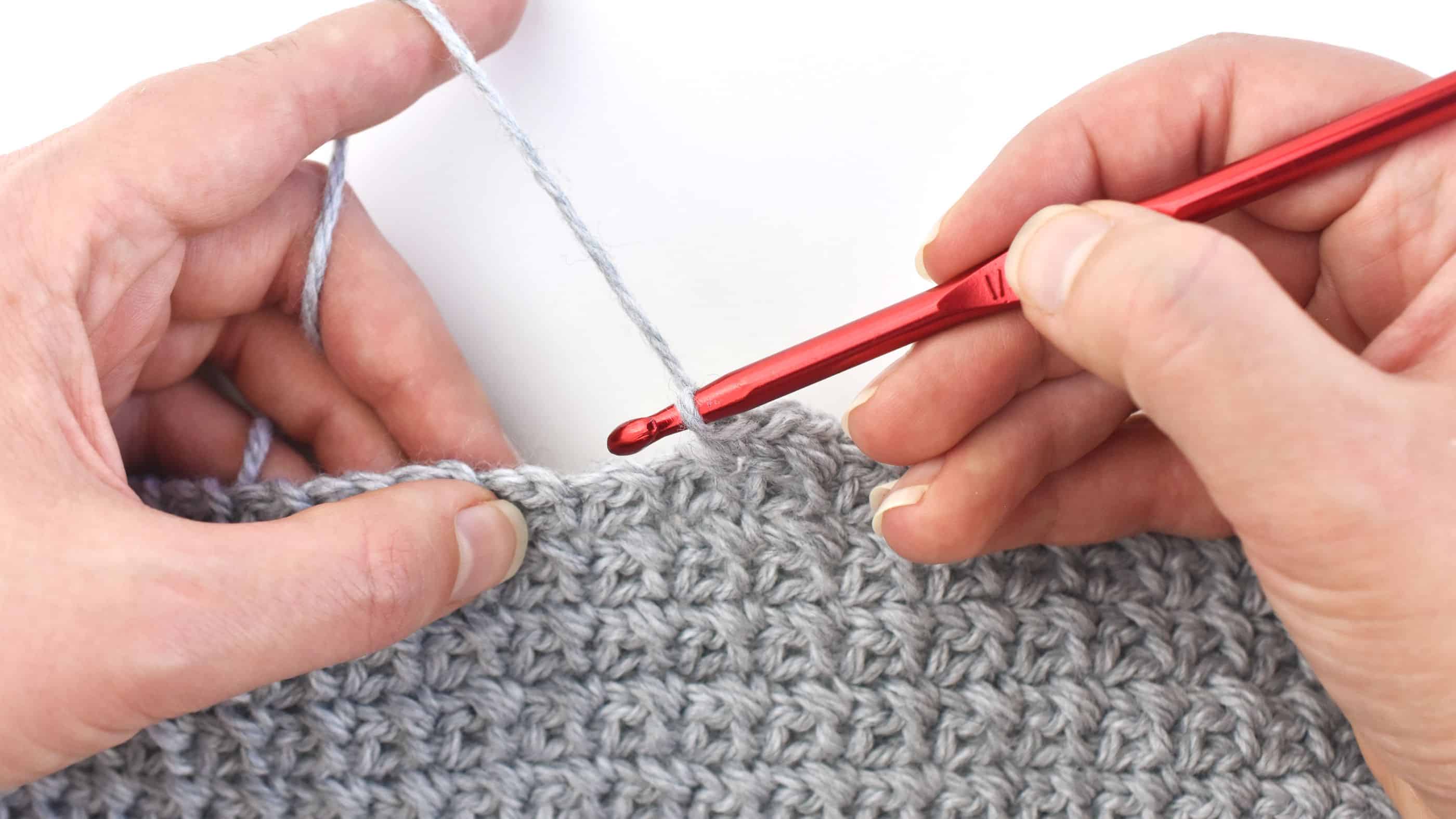
One of the most popular crocheting techniques is Tunisian crochet. Other names for this include “Afghan crochet,” “Shepherd’s Knitting,” “Railroad Knitting,” and “Cro-hooking.” This method is like knitting, so it also gives a knitted look to the fabric. In Tunisian crochet, you hold multiple loops on the hook before stitching them together in a row and working back to the left side.
Double-ended crochet is another crocheting technique. This is also called “double end crochet,” “crochet on the double,” or “crochet knit.” Double-ended crochet is much like Tunisian crochet, except a double-ended hook is used. With a double-ended hook, you can use two different yarns. You can choose yarns with different colors, weights, or textures. This results in a unique fabric.
Aside from these two, fabric crochet is also popular. This technique is a little different because it uses strips of fabric instead of yarn. There are plenty of other techniques out there, such as hairpin lace, broomstick lace, and pineapple lace. However, Tunisian crochet and double-ended crochet are the most common.
Knitting vs. Crochet: Stitches
Since knitting and crocheting have different techniques, they also have different stitches. In fact, they tend to look different too. Crochet stitches look like a chain of small knots. This gives the fabric a bumpy feeling. Meanwhile, knit stitches are usually looser. Thus, the fabric has more drape and stretch.
Knitting has three basic stitches.

They are called the knit stitch, stocking stitch, and purl stitch. Of course, there are plenty of other types of stitches as well. Examples are the slip stitch and moss stitch. However, knitting professionals often advise beginners to start with the knit, stocking, and purl stitch. With these three, you can already make many projects.
The knit stitch, or “Garter stitch,” is the easiest knitting stitch. To make a garter stitch, you simply knit any number of stitches in a row and follow only one direction. That is, if you knit the first row from left to right, the second row must also be from left to right. Knit stitches result in a pattern with the “wrong side” looking the same as the right side. With this, you will need to count the number of stitches you make per row. That way, you don’t end up with an uneven fabric. Unless, of course, you’re going for an asymmetrical look.
Another knit stitch is the stocking stitch. Like the knit stitch, you can do any number of stitches you prefer. However, the first row starts from left to right. Then, the second row starts from right to left.
The purl stitch is the opposite of the stocking stitch. In fact, it is also called the “reverse stocking stitch.” In the first row, you start knitting from right to left. And then, in the second row, you start knitting from left to right.
Did you know about the sweater curse? The sweater curse says you can’t knit a sweater for your partner. Otherwise, you will break up. You can only give them a sweater you made once you are married.
In crochet, there are six basic types of stitches.
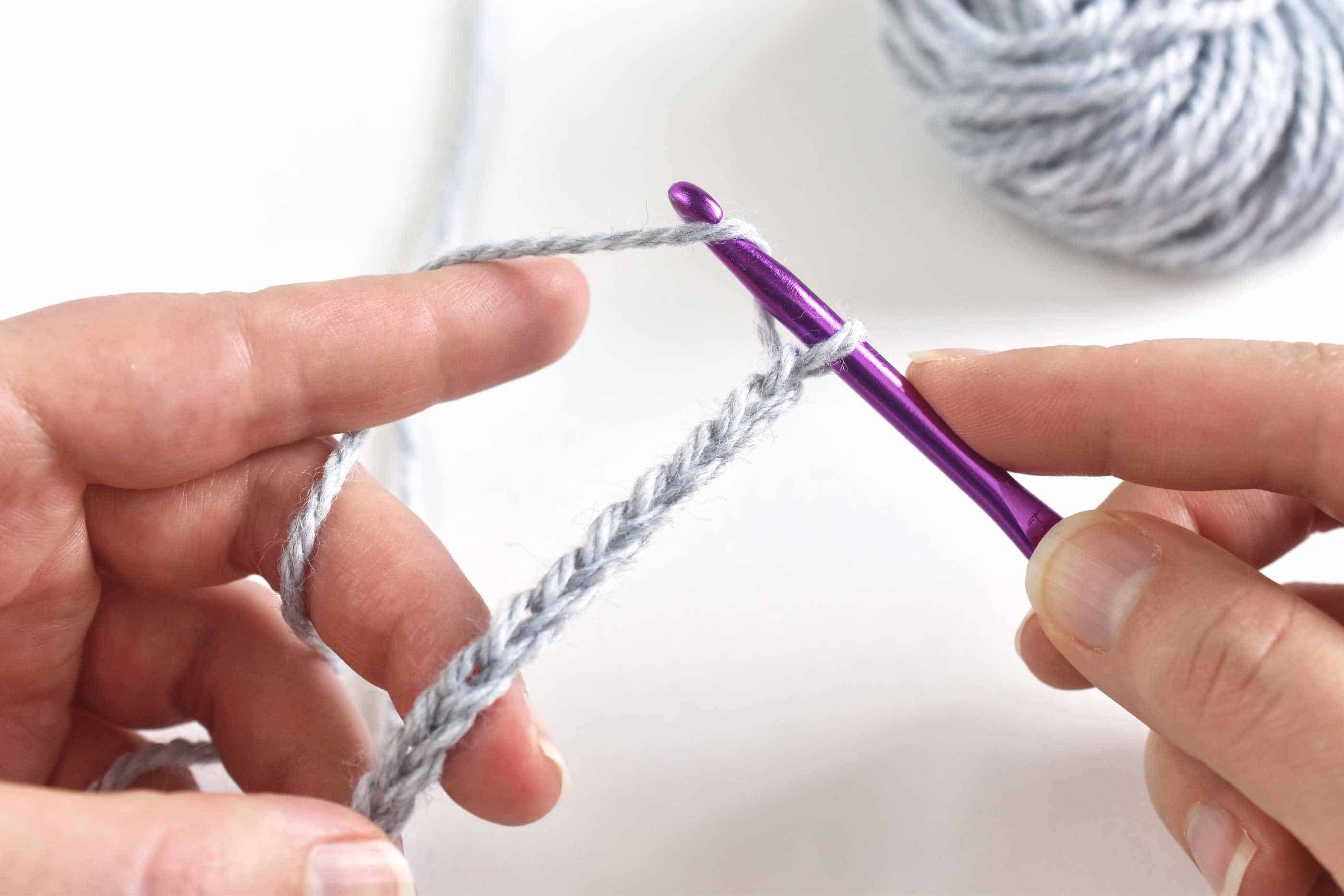
First, the crochet chain stitch is the foundation of crochet projects. It is basically the first chain, or “base chain,” that you stitch into a row. Another one of the simplest crochet stitches is the single crochet stitch. In crochet guides, you’ll find this abbreviated as “sc.”
The double crochet stitch is like the single crochet stitch. However, you draw your yarn over and through two loops instead of just one. It is abbreviated as “dc.” The half double crochet stitch, abbreviated “hdc,” is more open than the single crochet stitch. People define this as the in-between of single and double crochet stitch. This is the go-to for those who want to make something fast.
Meanwhile, the treble crochet stitch, or “triple crochet stitch,” is for adding height to your fabric. There are variations of the treble stitch, including double treble and triple treble. The slip stitch is another important crochet stitch for beginners. This joins crocheted fabric together. For instance, if you were making a multi-colored blanket, you would use a slip stitch to connect your granny squares together into one big crochet blanket.
Once you’ve gotten the hang of these crochet stitches, why not give star stitches and puff stitches a try as well?
Knitting vs. Crochet: Patterns
Like sewing, knitting and crocheting both rely on patterns. This is especially important for beginners. However, even if they often produce similar products, they don’t follow the same patterns. In fact, each one has its own catalog of patterns you can choose from.
For knitting, most patterns will be for clothes.
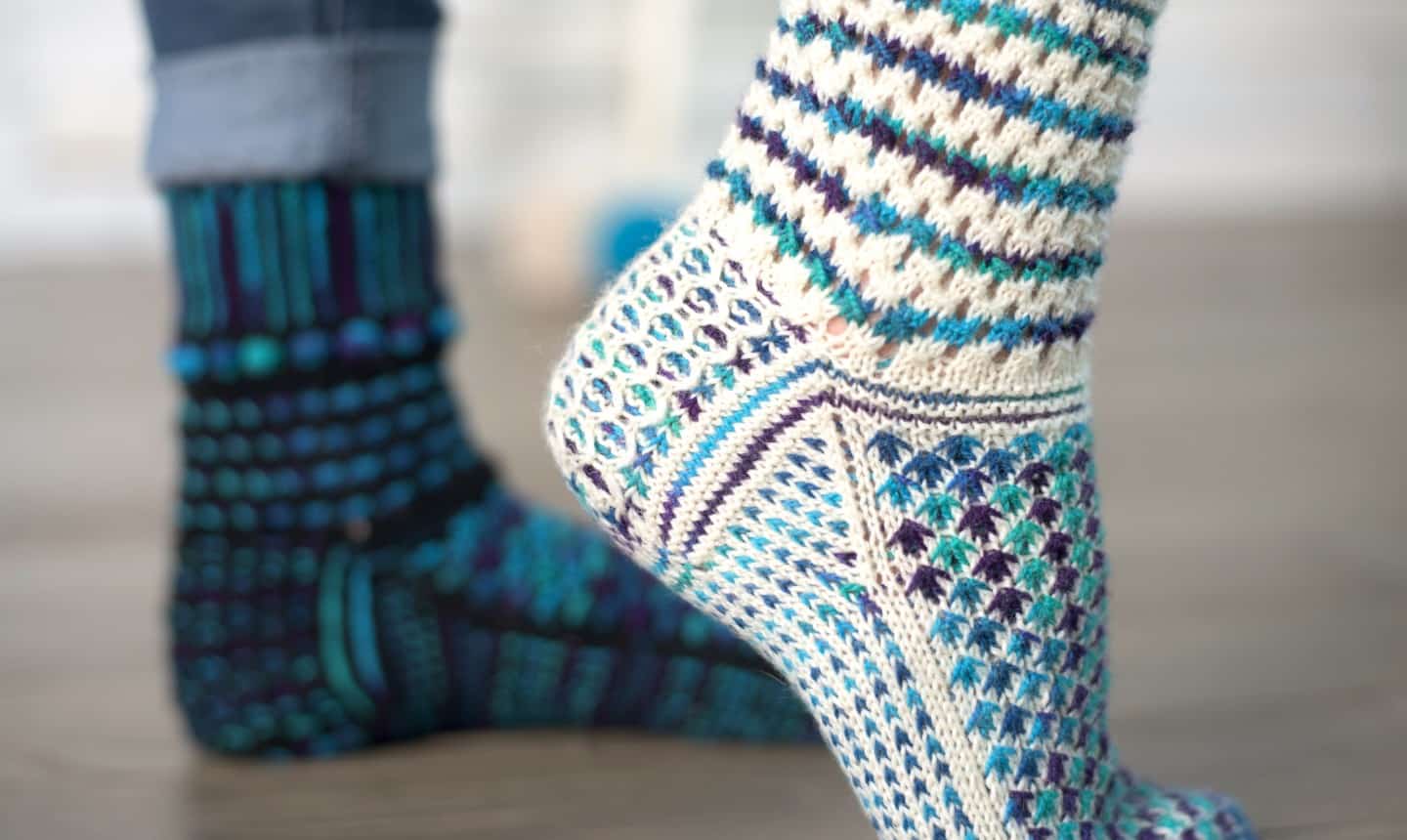
Knitting results in a looser fabric, so it feels softer and more comfortable for clothes. Thus, most patterns you find will be for clothing. You’ll find many free knitting patterns online for DIY projects like scarves, socks, beanies, and shawls. Throws, baby blankets, and pillowcases are also popular if you’re looking for something to give you a comfier slumber.
Crocheting is popular for house decors and other items.
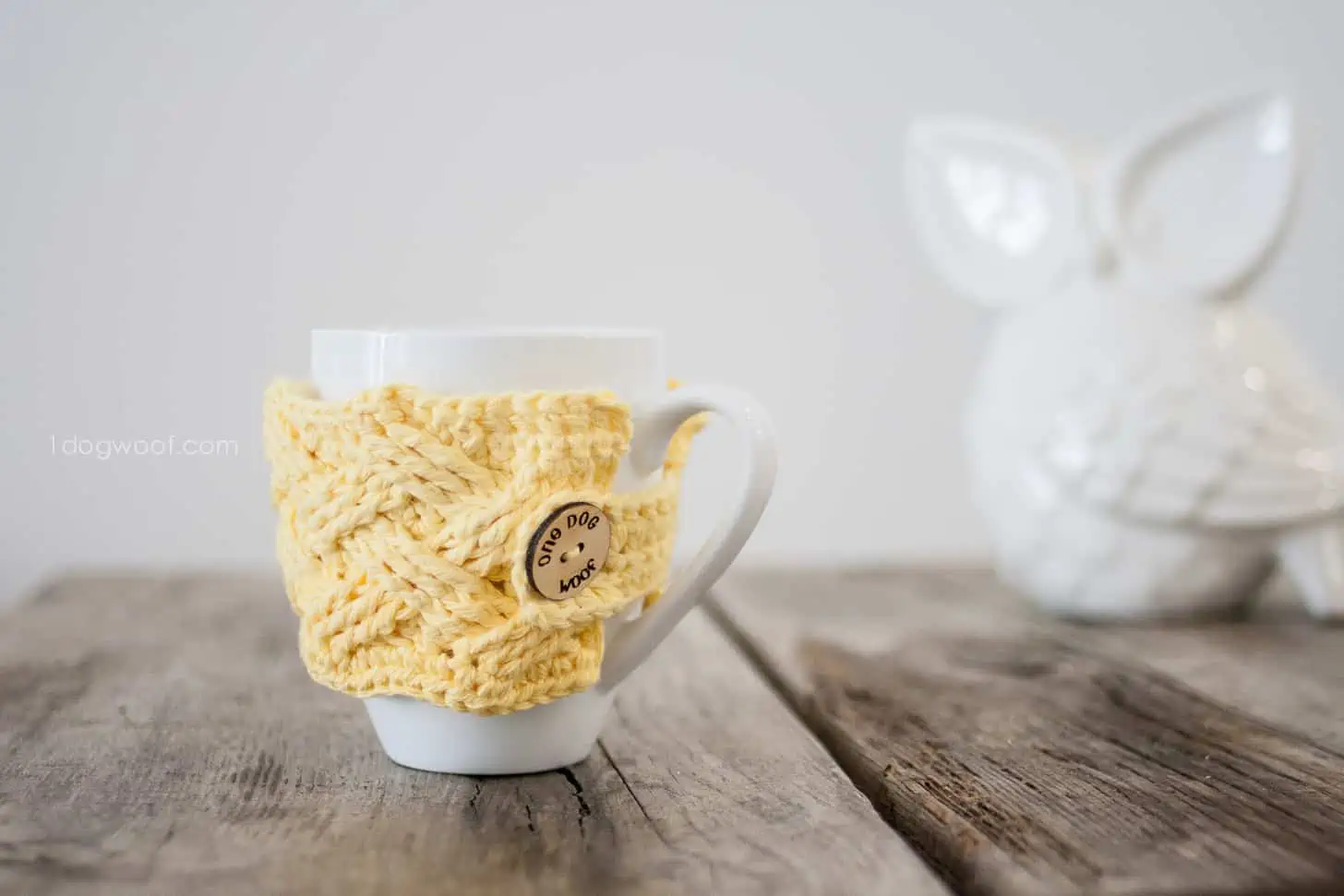
Blankets, hats, and socks are also possible crochet projects. However, many often prefer to make other items when crocheting. This is because crocheting can offer more structure than knitting. You’ll find many free crochet patterns online for handbags, coffee mug cozies, and even baskets!
Of course, if you also want to make crochet clothes, then there are patterns for that as well.
Knitting vs. Crochet: Which should I learn?
Some people say crocheting is easier to learn than knitting. Some people would disagree and say knitting is much easier. Plus, they say knitting uses up less yarn than crocheting!
In reality, there are a lot of pros and cons to knitting vs. crocheting that is purely subjective. Given the similarities and differences, it’s up to you which one you are more interested in.
Either way, these two crafts are great hobbies. Picking one (or both!) up is sure to be worthwhile!
Was this page helpful?
Our commitment to delivering trustworthy and engaging content is at the heart of what we do. Each fact on our site is contributed by real users like you, bringing a wealth of diverse insights and information. To ensure the highest standards of accuracy and reliability, our dedicated editors meticulously review each submission. This process guarantees that the facts we share are not only fascinating but also credible. Trust in our commitment to quality and authenticity as you explore and learn with us.

